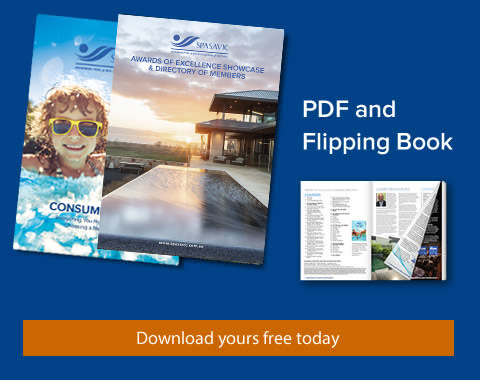Innovative designs and a focus on quality, make Australia a world leader in pool & spa filtration.
The task of the filtration system is to pump water from the pool, pass it through some form of filter medium and return it to the pool in pristine condition.
SAND FILTERS
By far the most popular option, these units force pool water through a tank filled with finely graded sand. As it passes through, the impurities attach themselves to the grains of sand. The larger particles are trapped at the surface of the sand bed and the finest particles are collected deep inside the bed where the grains are more tightly packed.
BACKWASHING
Over time, the accumulated impurities will restrict the flow through the filter and the pressure gauge will indicate backwashing is required. This process can be controlled by the filter’s multiport valve. Once set to ‘backwash’, this valve will reverse the water flow and send the unwanted particles down the ‘waste’ line.
After a minute or so, the water should be clear again. Usually a sight glass will allow you to monitor the process. Some filters even allow for automatic backwashing and this ensures the filter is always at peak efficiency, even if it has been left unattended for a prolonged period.
DIATOMACEOUS EARTH (DE) FILTERS
The water clarity achieved by a DE filter is quite remarkable, but there is a downside.
DE filters are both more expensive to buy and more work to maintain.
The DE medium is actually fossilised diatoms, which are not unlike coral. When crushed, they create a very fine powder and each grain has microscopic holes running through it to trap even the finest particles. It’s added to the filter by mixing with water in a bucket and pouring the slurry into the skimmer box.
Once inside the filter, dacron pads, septums or tubes trap the DE material to form layers or cakes of DE. These cakes then begin to trap the particles in the water flowing through.
Backwashing is the same as it is for sand filters but here the DE material is also flushed away and a new slurry needs to be added after the backwashing is complete. For the system to operate efficiently, the septums will also need to be removed and hosed down once or twice a year. Pads can clog at times and using granular chlorine as a sanitiser can cause a calcium layer to build up on the pads. So maintenance is greater but the brilliant end result may be well worth it.
CARTRIDGE FILTERS
As the name implies, these filters use a man-made cartridge as the filter medium. Folded into the tank like a concertina, the filter material has a surprisingly large surface area. The principle does not involve a backwash line so they don’t need connection to the sewer or waste line. This makes them ideal for spas and areas where disposal of waste is an issue.
Cartridge filters can be installed before the pump, and if necessary inside an oversized skimmer box when space is restricted. Cleaning is simply a matter of removing the cartridge and hosing it off, although having a second cartridge to use while the clogged unit is soaking overnight in a cartridge cleaning solution is recommended.
There are many factors to consider when selecting the type of filter that’s best for your installation. It is always wise to seek the advice of a SPASA Victoria Pool Builder or Pool Shop Member.



